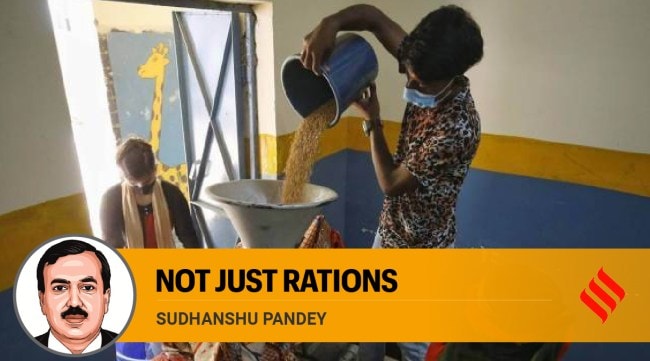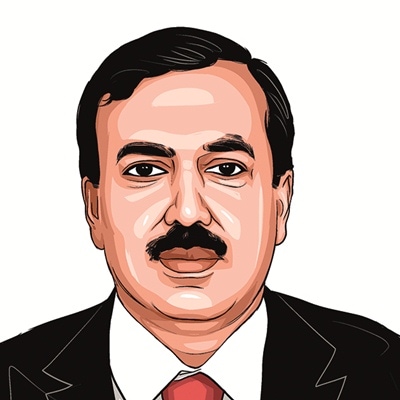Opinion SMART PDS scheme: A bold initiative in digitisation
The scope of the scheme is clearly beyond just ration distribution, will allow greater accountability across government schemes
 The lack of data on consumption and mobility patterns was a big challenge for planners to ensure delivery of critical central welfare schemes to the most vulnerable sections. The SMART-PDS initiative will go a long way in addressing this deficit.
The lack of data on consumption and mobility patterns was a big challenge for planners to ensure delivery of critical central welfare schemes to the most vulnerable sections. The SMART-PDS initiative will go a long way in addressing this deficit. The National Food Security Act, 2013 (NFSA), governs the country’s largest beneficiary-centric programme. The Targeted Public Distribution System (TPDS) provides food security to 81.35 crore persons every month.
As the Centre has begun moving towards the implementation of the Scheme for Modernisation and Reforms through Technology in Public Distribution System (SMART-PDS) to prevent leakage of foodgrains, increasing the efficiency of the distribution chain and ensuring the availability of such provisions for migrants, a lot of data is being generated and stored every day by states/UTs. Data Analytics on the TPDS ecosystem is allowing us to generate critical information about the beneficiaries, their food security needs and patterns of migration.
The lack of credible and dynamic data on consumption and mobility patterns was always a big challenge for planners to ensure efficient delivery of critical central welfare schemes to the most vulnerable sections of our society. It was felt that the data generated can be leveraged for the delivery of many other central schemes and welfare programmes. The SMART-PDS initiative of the Department of Food and Public Distribution (DFPD) to implement data-driven decision-making will go a long way in addressing this deficit. Convergence and integration with the use of AI can really be a game changer for people as well as governments in bringing accountability across all programmes. The national leadership deserves credit for pushing through these vital trans-ministerial convergences.
The Centre now plans to use the data analytics/BI platforms and other ICT tools and technologies and deepen PDS reforms. There will be a standardisation of the PDS operation through the use of technology and integrating the same with FCI, CWC, transport supply chain of rail and road, Ministry of Education, Women and Child Development and UIDAI. Technology-led reforms are expected to overcome the state-level technological limitations of PDS operations concerning IT hardware, software and technical manpower. This will also institutionalise an integrated central system for all PDS-related operations across all states/UTs.
Today, nearly 93 per cent of the total monthly allocated foodgrains are distributed through the Aadhaar authentication mode using electronic Point of Sale (ePoS) devices. This dividend is directly attributed to the 100 per cent digitisation of ration cards, online management of beneficiaries’ data, computerisation of foodgrains’ allocation and supply chain management systems in all states/UTs, and the installation of ePoS devices in almost the entire country.
To sustain the reforms brought in by the End-to-end Computerisation of TPDS Operations scheme and address the above key challenges, the government has launched a Central Sector Scheme – Integrated Management of Public Distribution System (IM-PDS). Its main objectives are: Implementation of One Nation One Ration Card (nation-wide portability), creation of a national-level data repository for de-duplication of beneficiary/ration cards data; creation of integrated data infrastructure/systems across ration card management; allocation, supply chain of foodgrains and FPS automation among Centre and all states. Presently, the ONORC plan is seamlessly functional in all 36 States/UTs and is consistently recording over 3.5 crore monthly portable transactions. This count is steadily improving. Since its inception in August 2019 in just four states, ONORC has so far recorded more than 100 crore portability transactions, including both inter-state and intra-state transactions. The data generated during this process has now become a tool for many other central ministries and state governments.
Some of these spinoffs include benefits for the e-Shram Portal, Ayushman Bharat, and PM-Street Vendors AtmaNirbhar Nidhi (PM-SVANidhi) Yojana. The Union Ministry of Agriculture and Farmers’ Welfare (MoAFW) envisages family-based ONORC/ration card data to map the beneficiaries. Similarly, with the granting unique of a unique (Aadhaar) number to the newly born, the possibility of tracking their nutrition from ICDS centres to PM Poshan and then as PDS beneficiaries in a seamless manner will become a reality. These are only a few examples list can be exhaustive.
The scope of SMART PDS is clearly beyond just ration distribution.
The writer is former Union food secretary. Views are personal




